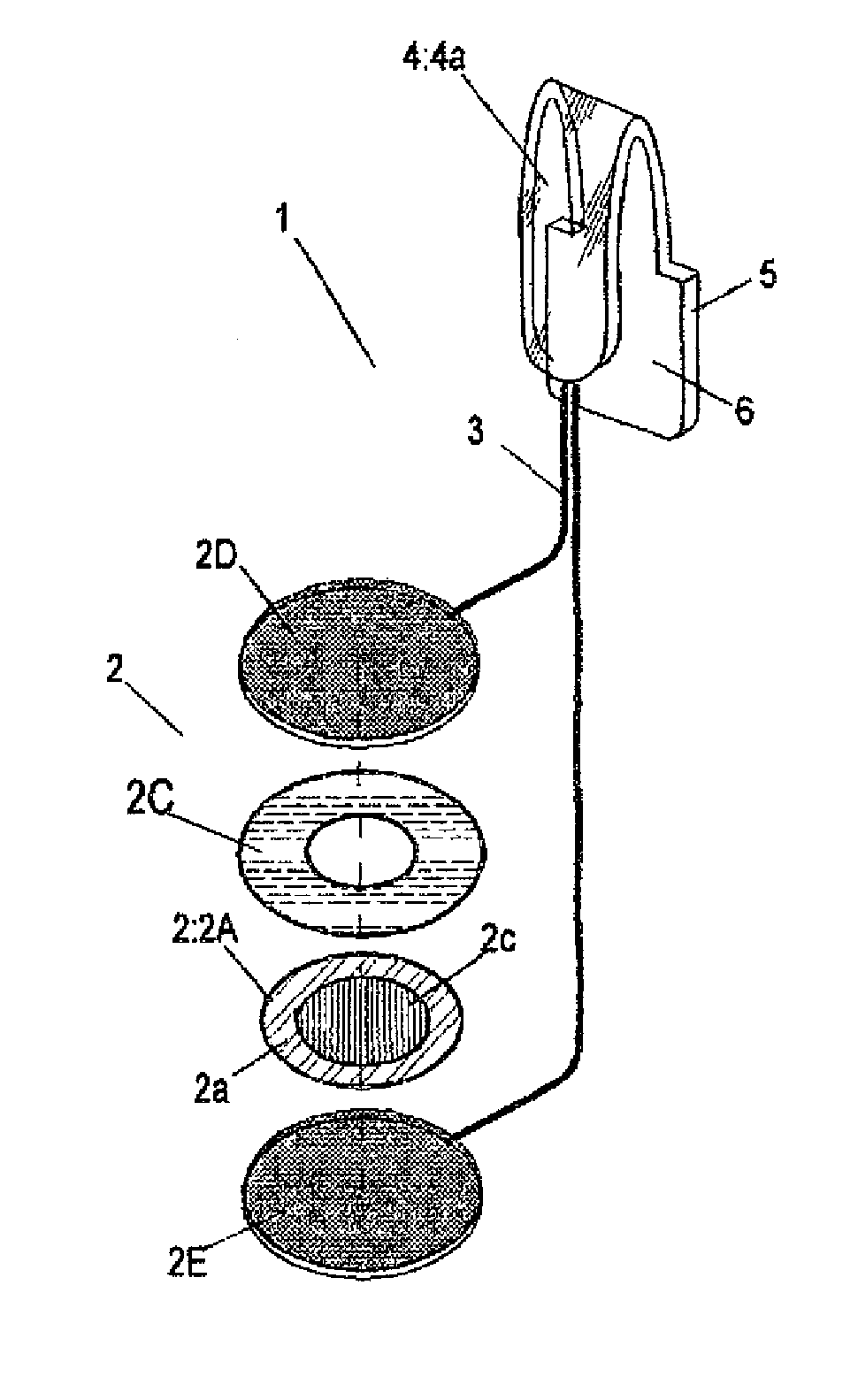Pedometer for shoe
a pedometer and shoe technology, applied in the direction of distance measurement, instruments, fastenings, etc., can solve the problems of high manufacturing cost, erroneous measurements, and difficult mounting of piezoelectric transducers and counting devices on the sho
- Summary
- Abstract
- Description
- Claims
- Application Information
AI Technical Summary
Benefits of technology
Problems solved by technology
Method used
Image
Examples
Embodiment Construction
[0078]Hereinafter, some embodiments of the present invention will be described. The embodiments do not limit the invention according to the claims, and all the combinations of the features described in the embodiments are not necessarily essential to means provided by aspects of the invention.
[0079]The following describes in detail exemplary embodiments of the present invention with reference to the attached drawings. FIGS. 1A to 1D and FIGS. 2A to 2D are overall views illustrating exemplary embodiments of the pedometer for a shoe according to the present invention. FIGS. 3A to 3D illustrate exemplary embodiments of an electromotive unit of the pedometer for a shoe according to the present invention.
[0080]Referring to FIGS. 1A to 1D, an electromotive unit 2 is shaped like a flat plate to have a substantially circular outline. A wire material 3 is connected to the electromotive unit 2 and configured to deliver the electric current produced by the electromotive unit 2. The wire materi...
PUM
 Login to View More
Login to View More Abstract
Description
Claims
Application Information
 Login to View More
Login to View More - R&D
- Intellectual Property
- Life Sciences
- Materials
- Tech Scout
- Unparalleled Data Quality
- Higher Quality Content
- 60% Fewer Hallucinations
Browse by: Latest US Patents, China's latest patents, Technical Efficacy Thesaurus, Application Domain, Technology Topic, Popular Technical Reports.
© 2025 PatSnap. All rights reserved.Legal|Privacy policy|Modern Slavery Act Transparency Statement|Sitemap|About US| Contact US: help@patsnap.com



